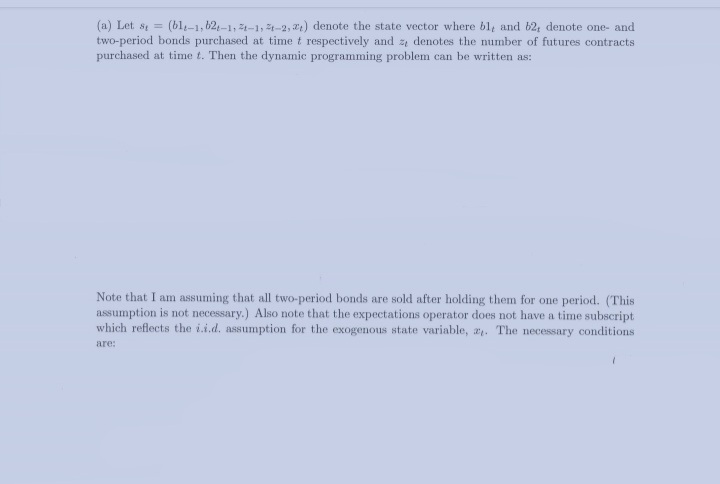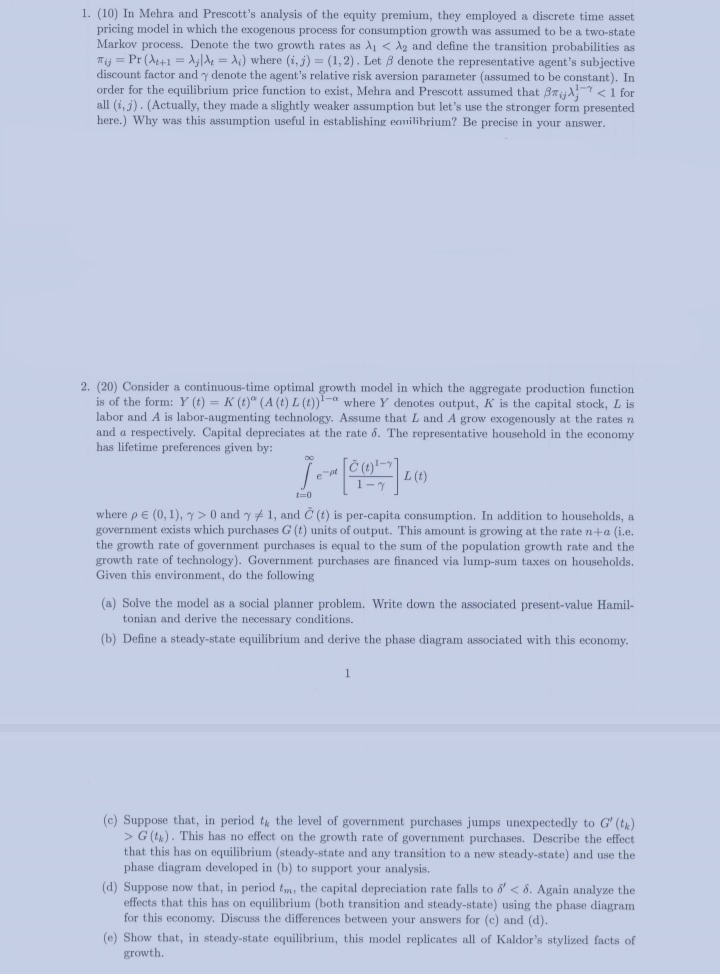Answered step by step
Verified Expert Solution
Question
1 Approved Answer
am stuck please guide me on this step by step (a) Let s. = (ble-1, 62-1, 21-1, 21-2,2:) denote the state vector where bl, and
am stuck please guide me on this step by step


Step by Step Solution
There are 3 Steps involved in it
Step: 1

Get Instant Access to Expert-Tailored Solutions
See step-by-step solutions with expert insights and AI powered tools for academic success
Step: 2

Step: 3

Ace Your Homework with AI
Get the answers you need in no time with our AI-driven, step-by-step assistance
Get Started


